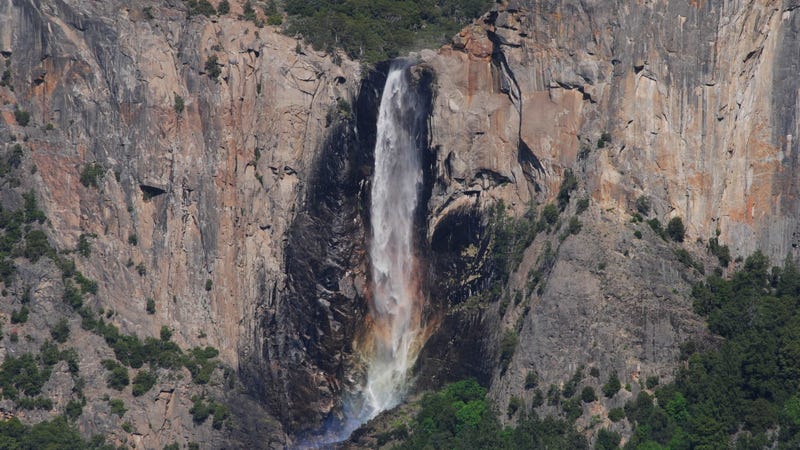
Scientists observed waterfalls forming simply through the movement of water downhill in a new laboratory study—a result that could complicate our understanding of Earth’s history.
Waterfalls may be beautiful and awe inspiring, but they’re also windows into the past, signaling changes in sea level, tectonic activity, or climate change. But if waterfalls can form without an external force, as they did in this new experiment, scientists might have to rethink inferences they’ve made about Earth using waterfalls.
“There’s this idea that we can look at the topography of a planetary body and use it as a record of its history,” study author Joel Scheingross, assistant professor in the Department of Geological Sciences and Engineering at the University of Nevada, Reno, told Gizmodo. But if waterfalls can form on their own, “then it means that the notions of how we use topography and the presence of waterfalls to understand Earth’s history is much more complicated than we thought.”
Earth scientists will occasionally use present-day topography to signal the presence of some change in the Earth’s past; some of Yosemite Valley’s deep valleys signal glaciers in its past, for example. A combination of various past influences can form a waterfall, including faults that cross rivers moving over time, landslides or glaciers altering the shape of the land, and climate change influencing the rate that rivers cut into the Earth. But the new study adds something to the mix—that waterfalls might just.... appear.
The researchers modeled a riverbed in the lab using a 24-foot-long, 1-foot-wide piece of polyurethane foam meant to simulate bedrock. They tilted it at a roughly 10-degree incline and poured water filled with gravel onto it. The gravel was meant to represent sediment carried by a flowing river.
Advertisement
The water began to carve a channel through the foam after just a few minutes, and after 2.4 hours, a staircase of pools, followed by steep chutes, followed by pools again, began forming. At three hours, a small waterfall appeared. As more time passed, continued erosion stopped that waterfall behavior, and a new waterfall began to form, according to the paper published today in Nature.
Of course, Earth’s bedrock isn’t made form polyurethane foam—but researchers know how to approximately scale this behavior to better understand what might happen in the real world, where harder volcanic rocks might flow over softer sedimentary rocks. You simply can’t wait thousands of years as part of your experimental protocol. And even though this was a proof-of-concept model in the lab, other researchers were impressed with the work.
“It’s an epic set of experiments that represent a huge amount of effort to reproduce in the laboratory and can get some of the first data [that] can answer some of these questions,” Andrew Wickert, assistant professor of earth sciences at the University of Minnesota, Twin Cities, who reviewed the paper, told Gizmodo.
Advertisement
“If we want to understand how the surface of the Earth changes through time, it’s important to understand all of the different processes that can change the surface of the Earth,” Nicole Gasparini, associate professor in the Tulane University Department of Earth and Environmental Sciences who was not involved with the research, told Gizmodo. “This study gives us pause because it says that some of these might form on their own and have nothing to do with the events of the past.”
Gasparini and Scheingross both noted that these results don’t imply that studies of waterfalls to understand the past are wrong. Instead, it means there’s a formation method that hasn’t been taken into account that scientists will now need to think about. Gasparini thought the next step was to go find waterfalls that could have formed like this in nature. Indeed, the paper points out several examples of waterfalls with similar structures to the one Scheingross’ team created in the lab, like Bridalveil Creek in Yosemite Valley, California.
But ultimately, this is just one trial. Scheingross hopes to run more experiments to understand just how widespread this effect might be.
Advertisement
Bagikan Berita Ini














0 Response to "'Self-Forming' Waterfalls Could Change Our Understanding of Earth's History - Gizmodo"
Post a Comment